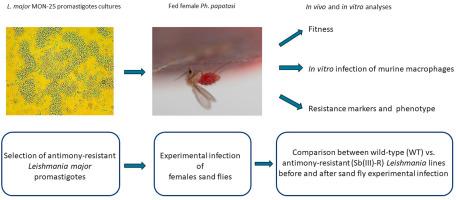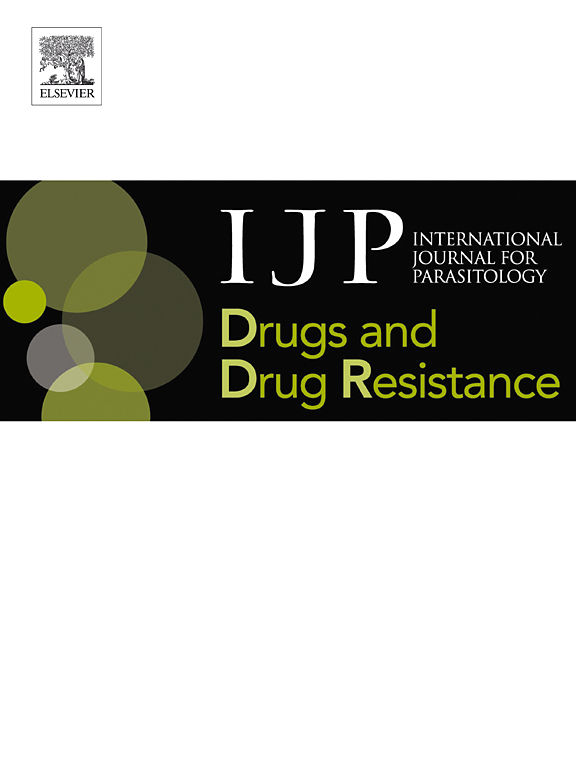Effect of Phlebotomus papatasi on the fitness, infectivity and antimony-resistance phenotype of antimony-resistant Leishmania major Mon-25
Abstract
Leishmania major is responsible for zoonotic cutaneous leishmaniasis. Therapy is mainly based on the use of antimony-based drugs; however, treatment failures and illness relapses were reported. Although studies were developed to understand mechanisms of drug resistance, the interactions of resistant parasites with their reservoir hosts and vectors remain poorly understood. Here we compared the development of two L. major MON-25 trivalent antimony-resistant lines, selected by a stepwise in vitro Sb(III)-drug pressure, to their wild-type parent line in the natural vector Phlebotomus papatasi. The intensity of infection, parasite location and morphological forms were compared by microscopy. Parasite growth curves and IC50 values have been determined before and after the passage in Ph. papatasi. qPCR was used to assess the amplification rates of some antimony-resistance gene markers. In the digestive tract of sand flies, Sb(III)-resistant lines developed similar infection rates as the wild-type lines during the early-stage infections, but significant differences were observed during the late-stage of the infections. Thus, on day 7 p. i., resistant lines showed lower representation of heavy infections with colonization of the stomodeal valve and lower percentage of metacyclic promastigote forms in comparison to wild-type strains. Observed differences between both resistant lines suggest that the level of Sb(III)-resistance negatively correlates with the quality of the development in the vector. Nevertheless, both resistant lines developed mature infections with the presence of infective metacyclic forms in almost half of infected sandflies. The passage of parasites through the sand fly guts does not significantly influence their capacity to multiply in vitro. The IC50 values and molecular analysis of antimony-resistance genes showed that the resistant phenotype of Sb(III)-resistant parasites is maintained after passage through the sand fly. Sb(III)-resistant lines of L. major MON-25 were able to produce mature infections in Ph. papatasi suggesting a possible circulation in the field using this vector.


 求助内容:
求助内容: 应助结果提醒方式:
应助结果提醒方式:


